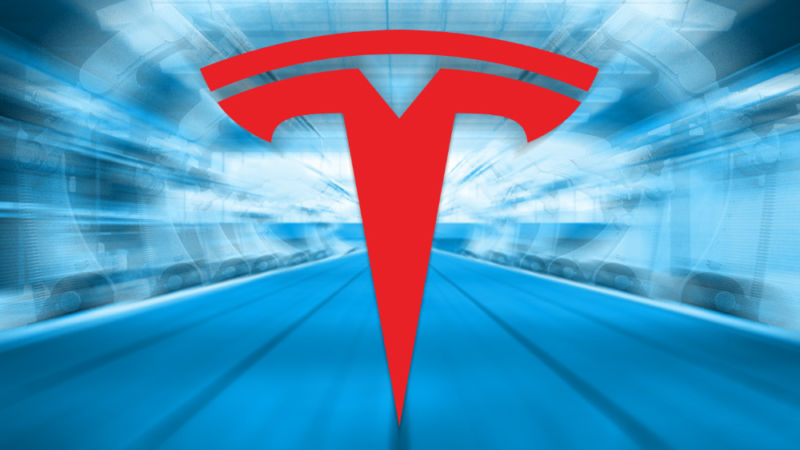

Tesla’s underwhelming investor day fails to impress investors
source link: https://arstechnica.com/cars/2023/03/tesla-investor-day-promises-master-plan-3-but-details-are-scant/
Go to the source link to view the article. You can view the picture content, updated content and better typesetting reading experience. If the link is broken, please click the button below to view the snapshot at that time.

where's the new cars? —
Tesla’s underwhelming investor day fails to impress investors
Tesla fans expecting info about new models were sadly disappointed.
Jonathan M. Gitlin - 3/2/2023, 1:19 PM

On Wednesday afternoon Tesla held a presentation for investors after the close of the markets. Billed as the debut of Elon Musk's third "master plan" for the electric vehicle maker, many fans of the company hoped the event would share concrete details on the long-delayed Cybertruck or an affordable "Model 2" EV.
But after a lengthy disclaimer warning viewers not to put much faith—or perhaps money—in anything that followed, the three-hour livestream provided few new insights into Tesla's plans to expand its product lineup beyond its current aging offerings. Investors did apparently take note, with the car maker's stock plunging nearly 6 percent in after-hours trading.
Master plans have been central to the Tesla mythos from its early days. In 2006, two years after joining the company, Musk published "The Secret Tesla Motors Master Plan" on the company's blog. That plan promised to build a sports car, then use the money from that to build "an affordable car," then "an even more affordable car," all while providing zero-emissions energy-generation options.
Most of that has come to pass, although the word "affordable" is certainly open to an awful lot of debate.
In 2016, Musk followed up with "Master Plan, Part Deux." This one boiled down to building "stunning solar roofs," expanding Tesla's product lineup to "address all major segments," creating an autonomous driving system "that is 10X safer than manual via massive fleet learning," which in turn would let owners' cars go out at night and earn money for them while they slept at home.
In these goals, the company has been much less successful. The solar roof tiles proved fantastically expensive, crushing demand and ensuring Tesla loses money on each install. The auto product range still only includes the increasingly antiquated Models S and X, neither of which sells many units these days, and the Models 3 and Y.
Meanwhile, in February Tesla was forced by government regulators to issue a recall for the controversial "full self-driving beta" due to its dangerous driving behavior, and now the company is being sued by investors who say Musk lied about the capabilities of the system. Needless to say, a Tesla robotaxi network remains a pipe dream for now, and the cars have not become appreciating assets.
AdvertisementHere’s what we did find out
Unlike those first two plans, this time there is no blog post to point to, nor even an investor slide deck. But we were given some specifics by Musk and other Tesla executives. For starters, they reiterated Tesla's goal to grow in production, from 1.3 million EVs in 2022 to 20 million EVs in 2030. (For context, the world's largest automaker currently is Toyota, which built approximately 10.5 million cars in 2022.)
This enormous growth would involve a high degree of manufacturing streamlining and a large reduction in parts, which could also allow Tesla to sell a much cheaper EV should it come to pass—and if it can resist the temptation to enjoy a more profitable margin. Tesla says it will also gain efficiencies by more vertical integration, not just of car components like processors for power electronics but also business operations software.
Tesla is also going to start refining its own lithium at a site in Corpus Christi, Texas. According to SVP of powertrain and energy engineering Drew Baglino, the site should be producing the mineral for use in batteries within 12 months. The company plans for an annual output of 50 GWh-per-year's worth of lithium, with a cathode processing plant located nearby to transform the raw material into car parts.
There will be a new drive unit that eschews rare-earth materials like neodymium. In its very early days, Tesla actually used AC induction motors, but, among other things, these are more complicated to assemble, and so it switched to permanent magnet motors with the introduction of the Model 3 in 2017. Now it's apparently trying to have the best of both worlds by developing a rare earth-less permanent magnet motor.
Other news included a new factory in Monterrey, Mexico (albeit, that was announced a few hours before the event) and the fact that Tesla has now opened 10 US Supercharger sites to non-Tesla drivers.
But there was no news about a facelift for the Model Y crossover, nor an update for the Model 3, which at 8 years old is when any other automaker would be about to introduce a replacement. The production version of the Cybertruck was similarly absent, although a prototype was on display for attendees.
Recommend
About Joyk
Aggregate valuable and interesting links.
Joyk means Joy of geeK